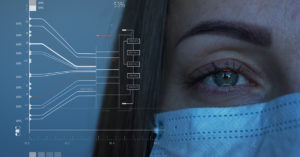EHRs are truly great at their jobs. They are fundamentally and fantastically equipped to collect data that to the naked eye seems inconsequential but is in fact essential for healthcare organizations. Like most of us, however, EHRs are not built to do it all, and they operate best alongside other skilled high performers. Let’s meet two of the team members who round out the bench of talent.
Data lake
Said to be originally coined in 2011, the term data lake has come to represent immense promise for the healthcare industry, as it generates and utilizes vast amounts of information. Essentially, it is a safe place to store all the information you have that you don’t use on a daily basis.
Your EHR can only contain and process so much valuable data at once, so it should be locked and loaded with the most essential, commonly used pieces of patient information. Meanwhile, the data lake securely holds all collected data in its rawest form, allowing it to remain available and analyzable without taking up limited processing and storage capacity in your foundational systems.
So, what happens when you put a data lake in the game with your EHR? Imagine you have a potential knee replacement patient. The patient’s presentation and medical history are acceptable, but knee replacements are an expensive and intense procedure, and you want to make sure the patient is most likely to have a positive outcome both clinically and with their insurer. You go to check BMI and a few other relevant metrics, but some of those key metric points are not loaded into the EHR patient profile. Rather than take up overnight processing time and effort to load new aspects into patient profiles, you grab your virtual fishing pole and head to the data lake. Enter the parameters of what you’re looking for, and within moments you’ve got your catch. Now, you can make a better, data-backed outcome prediction for the knee replacement patient.
Advanced analytics
To easily visualize what advanced analytics can do, I think about an iconic scene from the Iron-Man 2 movie, where Tony Stark has a huge scientific breakthrough. If you don’t remember the scene, check out this clip here.
Did you observe how Tony has access to all the information, how he picks up certain pieces, turns them over and explores them from all angles? He then can decide whether each piece is useful for his current question.
This is what advanced analytics does. It helps you find what information matters in the moment for the need at hand. Consider a denial. While your EHR will present a succinct, one-note view of what happened, advanced analytics dives into the data lake, picking out account data, transaction data, zero balance data, and remits to create a clear, multidimensional understanding of the situation. Like a jeweler might inspect a diamond, exploring its facets and getting to know it intimately, advanced analytics looks at data from every angle and extracts the valuable insights you need to improve critical processes and make smarter decisions for your patients.
Put us in, Coach, we’re ready to play!
Let me reiterate, EHRs are excellent. They are made for a specific purpose, and they accomplish it masterfully. By putting talented players like the data lake and advanced analytics in the game, you’re not minimizing the strength of the EHR. Rather, you’re unlocking new levels of possibility and achievement that come by surrounding your star with hardworking teammates. Even MJ and Lebron need four other people on the court.
Get our take on industry trends
Why managed Medicaid/Medicare health plans need analytics to improve outcomes
Managed care organizations that provide healthcare services to Medicare/Medicaid members are dedicated to improving the health and wellness of these underserved populations, especially those living in rural areas.
Read on...Using consumer analytics to steer health-related decisions
Companies tap into what people like to eat and drink, how we purchase consumables, where we like to shop, what shows we might like to stream, whether we vote, and so on. If you have ever created a profile on a streaming application (think Netflix or Amazon), you will receive recommended books, movies and other items just as soon as you start surfing.
Read on...Run: Bringing Data Science into your Organization
In this three-part series, we’ve been detailing a tiered approach to introducing and incorporating data science into your organization. In Part One: Crawl and Part Two: Walk, we discussed how to get started from scratch and start building out a dedicated data science program. Today, we’ll dive into the third and final phase to see how to grow quality, centralize governance, incorporate user feedback, and more.
Read on...Walk: Bringing Data Science into your Organization
In this three-part series, we’re exploring a tiered approach to introducing and incorporating data science into your organization. In Part One: Crawl, we discussed how to get started from scratch. Today in Part Two: Walk, we’ll address issues that may emerge and how to overcome them, how to build out a dedicated data science team, and more.
Read on...


